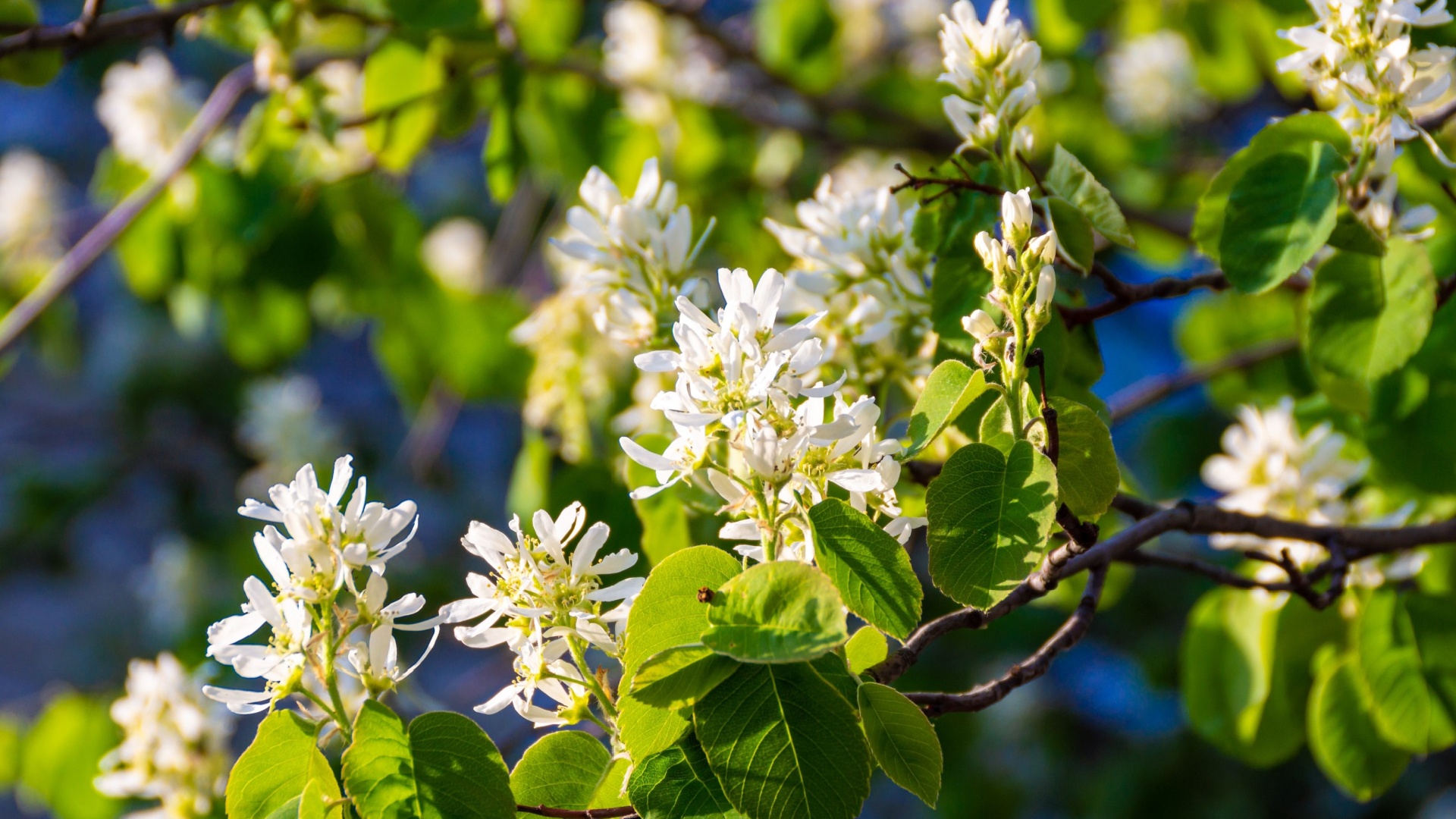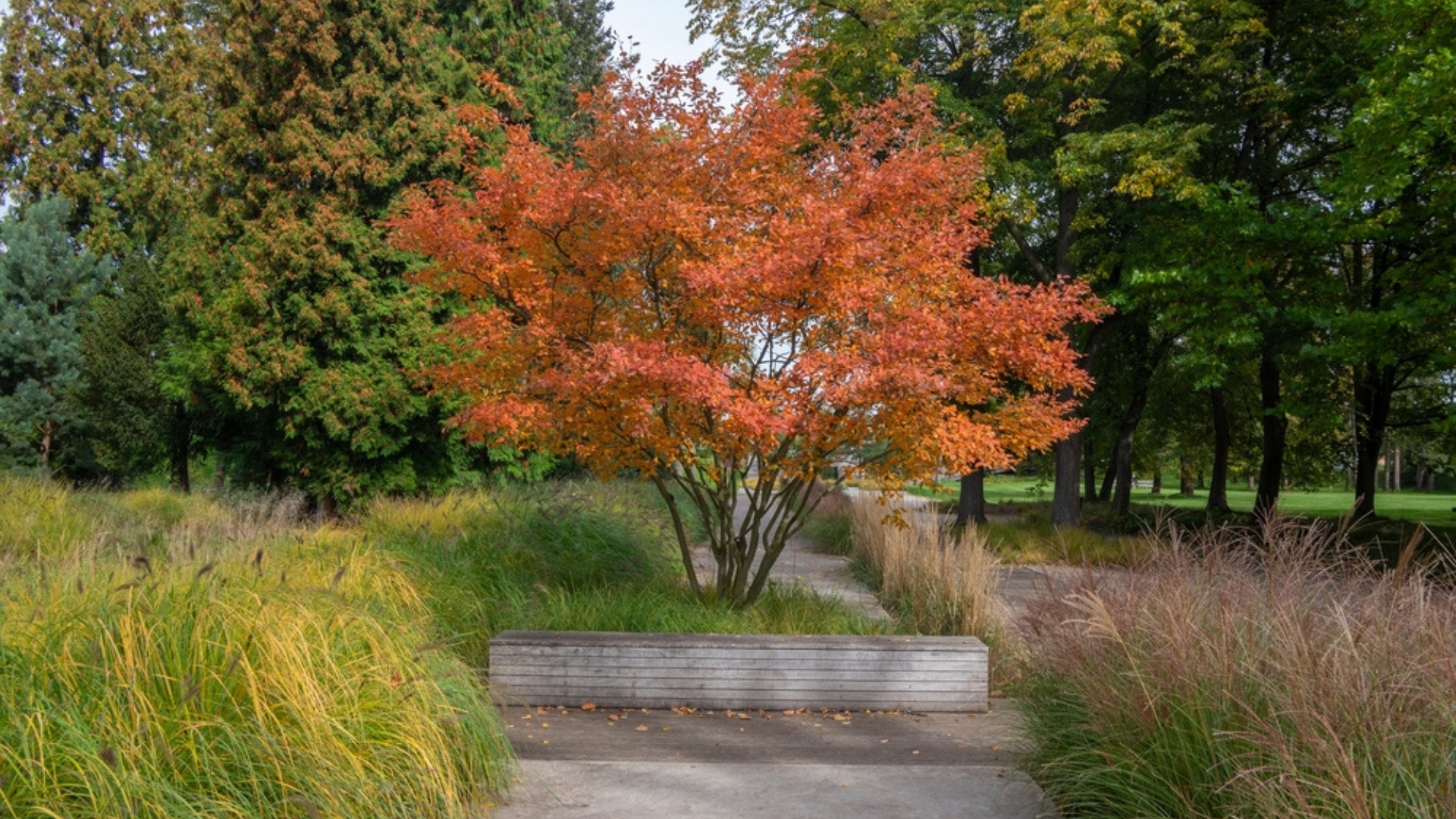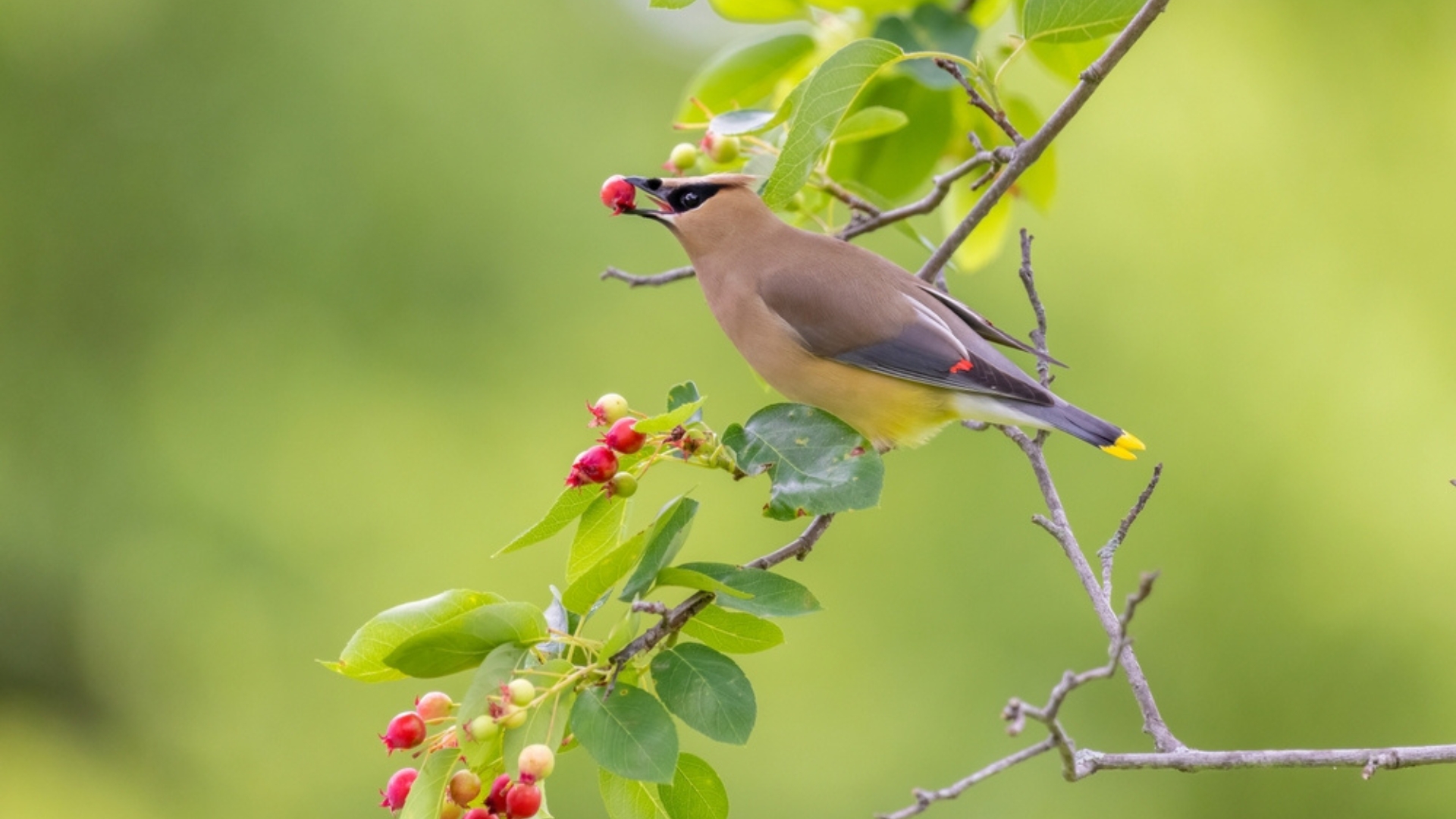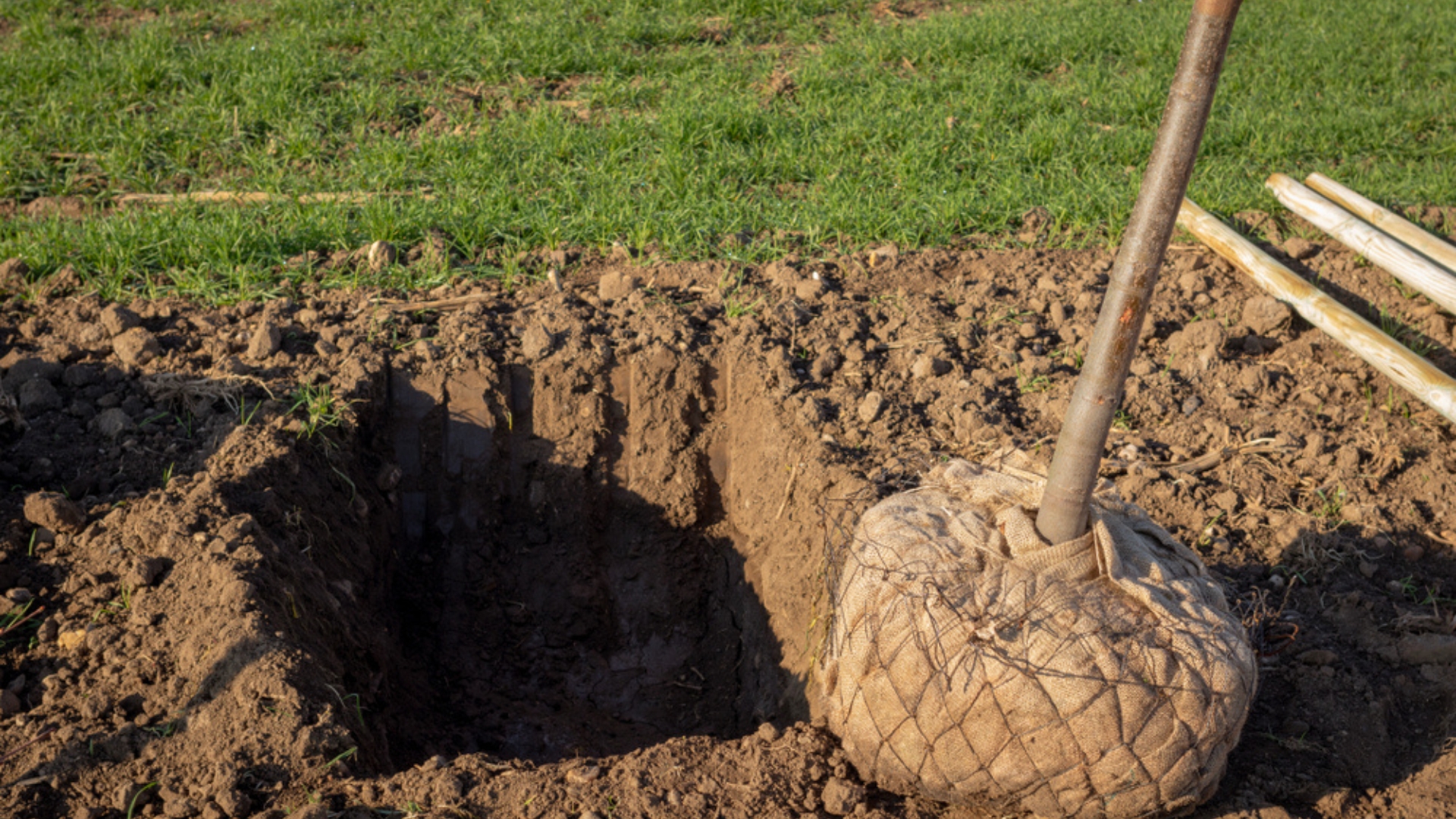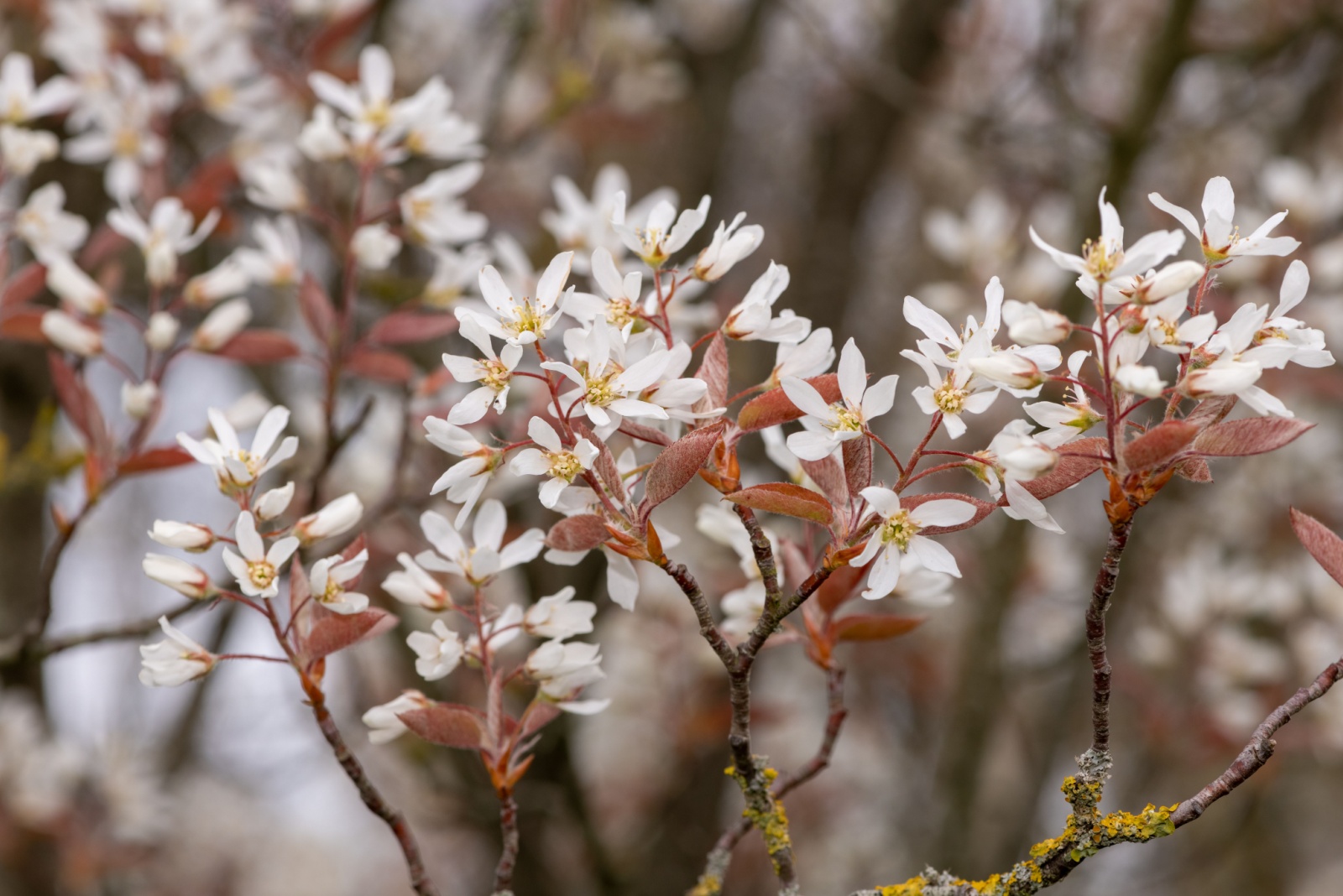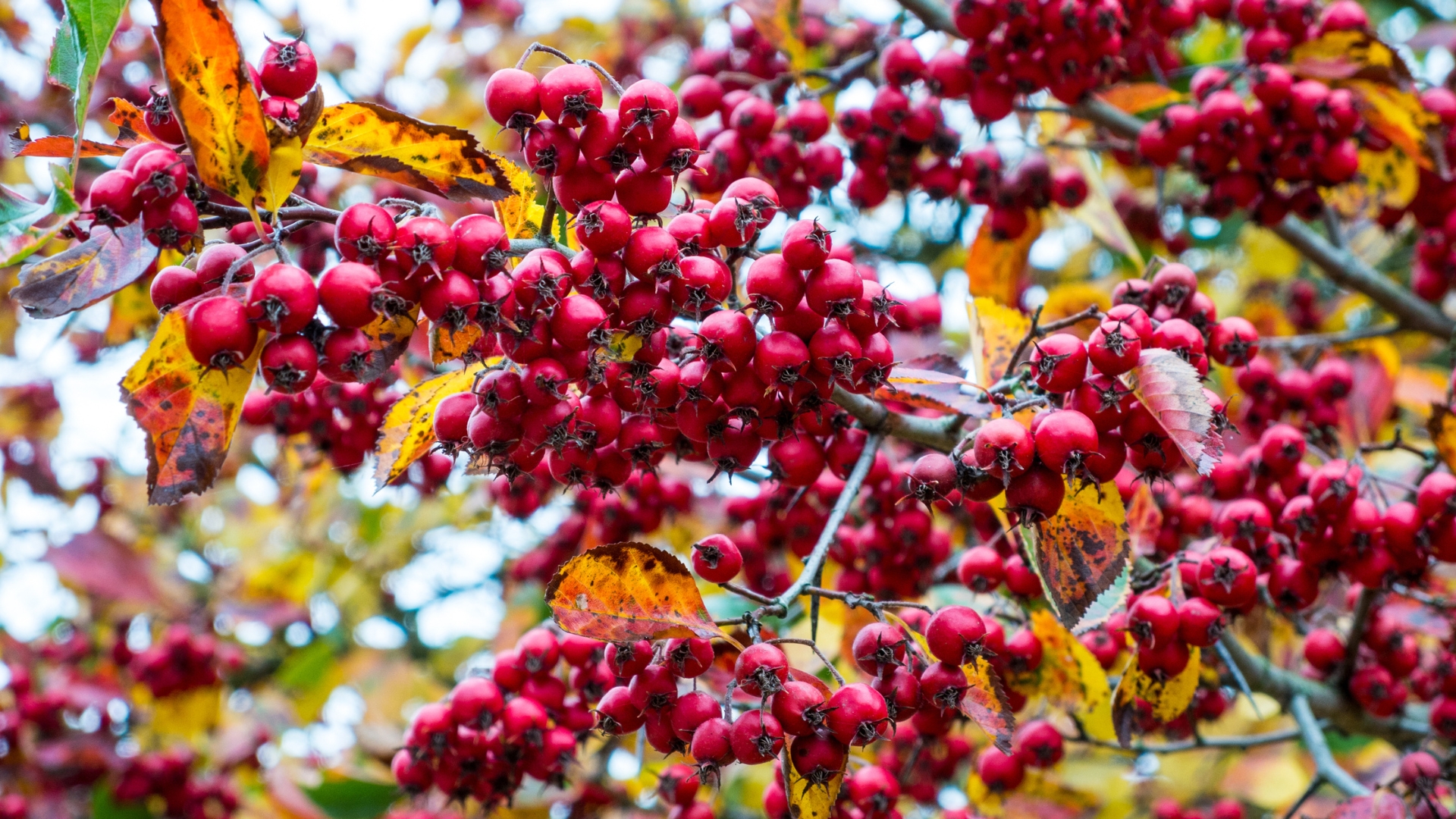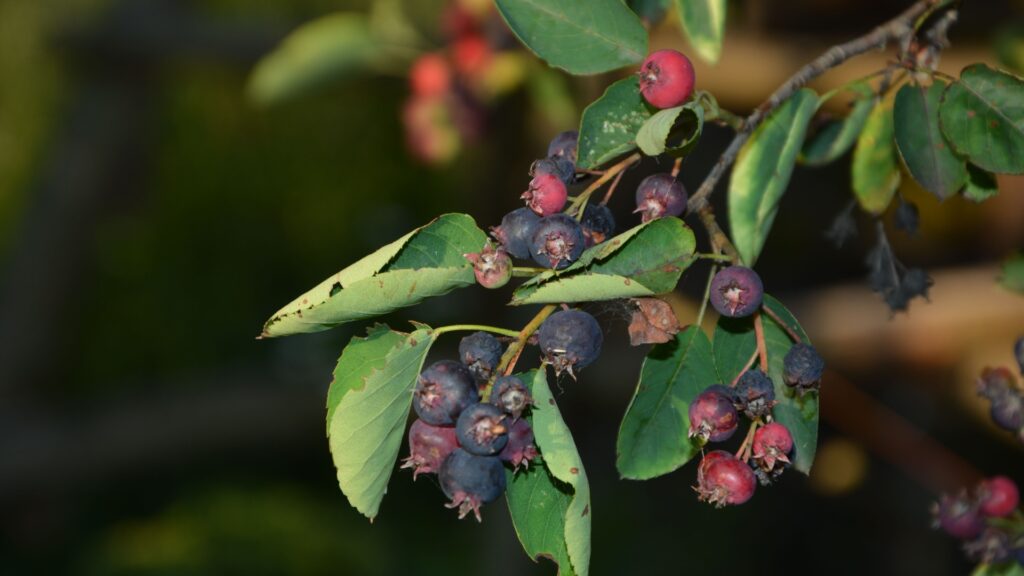Some trees are divas—needy, fussy, and quick to throw in the towel at the first sign of trouble.
But then there are the tough ones—the gritty growers that roll with the punches, dig deep, and thrive where others wither.
They laugh at drought, muscle through rocky soil, and still serve up sweet, juicy fruit like it’s no big deal.
If you want grit, grace, and a harvest worth its weight in gold, this tree’s got your back.
Juneberry Will Become Your Favorite Tree!
Few trees balance beauty and resilience quite like this one. In early spring, it wakes up with delicate white blossoms, giving way to lush green leaves that last through summer.
When fall arrives, it steals the show with fiery shades of red, orange, and gold. No matter the season, it knows how to put on a display.
Known as serviceberry, shadbush, or saskatoon in different regions, this North American native has been thriving for centuries.
It stands tall in forests, meadows, and rocky hillsides, handling poor soil, drought, and harsh winters without missing a beat.
This isn’t just a tree; it’s a survivor, a piece of history, and a true symbol of nature’s strength.
It Has Many Benefits For The Garden
A tree that’s both beautiful and useful is a rare find, but this one delivers on all fronts. Its dense canopy provides welcome shade in the summer, helping to keep the soil cool and protect nearby plants from harsh sunlight.
In spring, its fragrant blossoms attract pollinators like bees and butterflies, boosting the health of the entire garden.
Beyond its good looks, this tree also improves the soil. Its deep roots help prevent erosion, while fallen leaves break down into nutrient-rich mulch.
And if you’re looking to invite more wildlife into your space, birds will flock to its branches, drawn by the shelter and seasonal feast it provides.
Whether for shade, soil health, or biodiversity, this tree earns its keep in the garden.
Here’s How To Plant Juneberry
Getting this tree off to a strong start is easier than you might think. It thrives in well-drained soil and appreciates a sunny or partially shaded spot.
Dig a hole twice as wide as the root ball, making sure it sits at the same depth as it did in its nursery pot.
Once in place, backfill with soil, pressing gently to remove air pockets, and give it a deep watering to help it settle in.
To encourage healthy growth, add a layer of mulch around the base, keeping it a few inches away from the trunk.
This helps retain moisture and suppress weeds. With just a little care early on, it will soon be standing tall and ready to thrive.
Follow These Tips To Make It Thrive
This tree may be low-maintenance, but a little extra care will keep it growing strong and looking its best. Regular watering during its first year helps the roots establish, especially in dry conditions.
Once settled, it’s drought-tolerant, though an occasional deep soak in hot weather keeps it happy.
Pruning isn’t a must, but an occasional trim in late winter removes dead or crowded branches, improving airflow and encouraging healthy growth.
A light feeding of compost or balanced fertilizer in early spring gives it a boost before the growing season begins. With these simple steps, this hardy tree will flourish, rewarding you with beauty and bounty for years to come.
Enjoy A Delicious Harvest Year After Year
As summer fades, this tree offers one of its best rewards – clusters of deep purple, almost black, berries bursting with sweet, juicy flavor.
The fruit is often compared to blueberries but with a richer, slightly nutty taste. Birds love them just as much as people do, so be ready to harvest quickly before your feathered friends beat you to it!
These versatile berries can be eaten fresh, tossed into yogurt or oatmeal, or baked into pies and muffins.
They also make delicious jams, syrups, and even homemade wine. Packed with antioxidants and natural sweetness, they’re a treat straight from the tree or preserved to enjoy long after the season ends. With a harvest this good, you’ll be looking forward to it every year.
A tree that asks for little but gives so much – shade, beauty, and a harvest worth savoring. If you haven’t planted one yet, now’s the time to make it part of your garden’s story.
It’s Perfect For Small Spaces And Urban Gardens
Not every gardener has sprawling land to work with, but the good news is that this tree doesn’t need it. Its compact size and upright shape make it a perfect choice for smaller yards, patios, or even large containers on balconies.
Whether you’re in the suburbs or right in the city, this tree adapts beautifully. It brings life to tight spaces, offering the same blooms, vibrant foliage, and delicious fruit without demanding much room.
Urban gardeners will especially appreciate its resilience to pollution and limited soil quality – it’s truly a tough yet elegant addition to any green corner. With the right care, even the smallest garden can enjoy the big rewards this tree brings.

